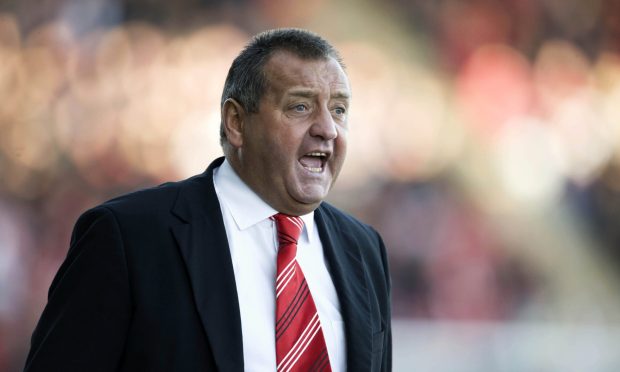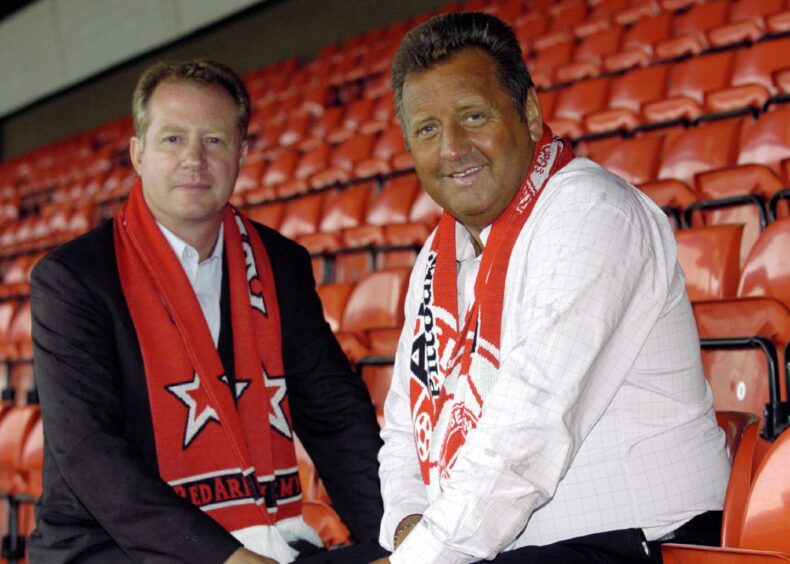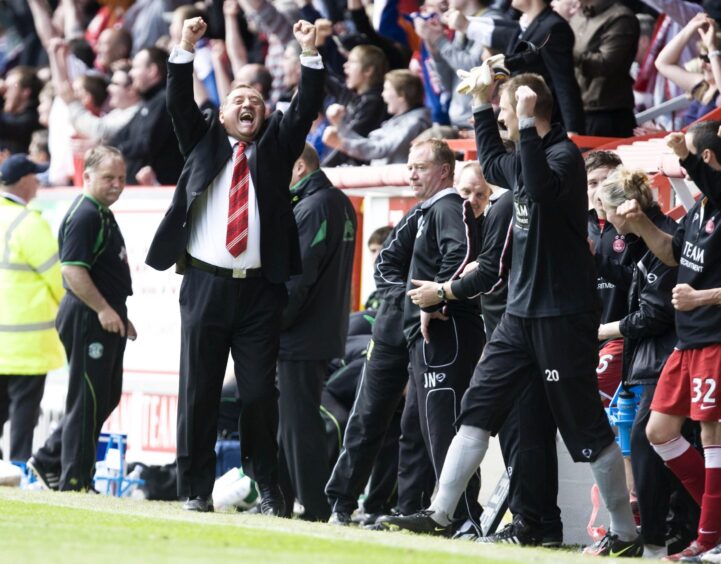Former Aberdeen captain Russell Anderson has hailed the character and bravery of his former manager Jimmy Calderwood following the news of his death at 69.
Anderson, who was Calderwood’s captain for three of the former Dons boss’ seasons in charge at Aberdeen from 2004 to 2007, insists the Glaswegian was a charismatic force of nature from the first day he set foot in Pittodrie.
He said: “I had never met Jimmy before he was appointed at the club so I had really no kind of preconceived ideas or kind of thoughts as to what kind of person he was.
“But I just remember that first day when he walked into the changing room and he had a personality that lit up a room.
“He really grabbed the squad and the team at that time and I think that’s probably one of the reasons why he was appointed.
“That big personality he had was an important factor in turning us round.”
Calderwood’s impact was immediate
Calderwood took charge at Pittodrie of a team which had narrowly avoided relegation the previous campaign, finishing 11th in the SPL.
But, having arrived at the Dons from Scottish Cup runners-up Dunfermline Athletic, Calderwood wasted little time in transforming his new club’s fortunes.
Anderson said: “I always use him as an example that it doesn’t take a huge amount to turn around a team if you manage to recruit the right players in the right positions and have the right coach in a place.
“The previous season to when he arrived we’d finished 11th and he made a couple of signings early on before we started that season.
“I remember that first season we actually had a fairly tough run of fixtures looking at it on paper.
“Our first game was at home against Rangers and it finished 0-0.
“We then went away to Hearts and drew 0-0 there then we went to Dunfermline and we won that game so he got us up and running quickly.
“He pretty quickly managed to turn us around and then he added a couple more players to the squad.”
Players wanted to play for him
Following a difficult couple of years in the bottom half of the top flight, Calderwood brought some respectability to the Dons by guiding the club to three fourth place finishes, a third place and a sixth position in his five seasons in charge.
He also led the club to the last 32 of the UEFA Cup and the semi-final of the League Cup and Scottish Cup in the 2007-08 campaign.
Anderson believes Calderwood’s approach to the game ensured he was a popular figure for his players at Pittodrie.
The former Dons skipper said: “He was the type of manager that you did want to play for.
“His attitude towards playing was, especially I would say in my time there, was to be brave about the way he wanted to go out and play.
“Sometimes that kind of worked against us occasionally but more often than not I think that’s what the supporters wanted to see.
“It was very much a case of trying to take the game to the opposition, playing on the front foot and there were quite a few examples of us maybe being behind in games and he’d go 2-4-4.
“Rather than taking a cautious approach I think he would go the exact opposite way.
“It was as if he felt we’ve got nothing to lose now, and we’ll go and have a go.”
Calderwood was fearless in his approach
Anderson believes one game in particular epitomised the fearless attack at all costs mentality of Calderwood during their time together at Aberdeen.
It came at Tannadice on January 7, 2006.
Anderson said: “Probably the best example I can remember was a Scottish Cup tie at Dundee United when we were 2-0 down and we came back to win 3-2.
“His approach to it was very attack-minded, playing on the front foot and trying to play football.
“But he signed well too. His recruitment, if you think about Barry Nicholson, Scott Severin, Steve Lovell, Lee Miller, and even Noel Whelan who was there briefly. They really helped the spine of the team.
“He made a huge difference to not just the team but the whole club and his personality had a positive impact on it.”



Conversation